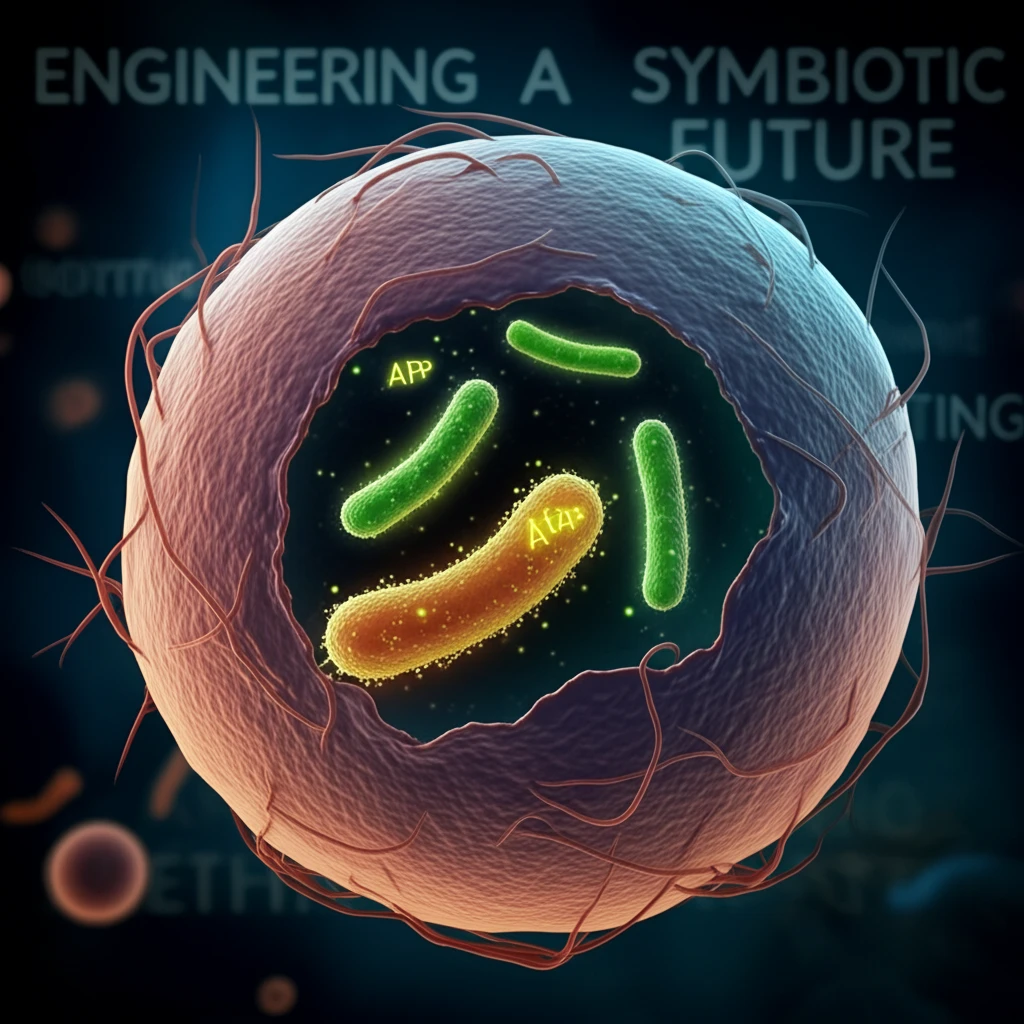
Rewriting Evolution: Engineering a Symbiotic Future Within Cells
"Can we fast-track organelle evolution by creating artificial endosymbiosis?"
Imagine mitochondria, the powerhouses of our cells, having a completely different origin story. Endosymbiotic theory proposes that these vital organelles were once free-living bacteria engulfed by a host cell billions of years ago. This partnership forever changed the course of eukaryotic evolution, paving the way for complex life as we know it. But can we recreate this ancient merger in the lab?
Researchers are now attempting to fast-forward evolution by engineering a modern version of this endosymbiosis. Their approach? Creating a symbiotic relationship between Escherichia coli (E. coli) bacteria and Saccharomyces cerevisiae (baker's yeast). This groundbreaking research aims to shed light on the earliest stages of mitochondrial evolution and explore the potential for creating novel cellular systems.
By manipulating the genomes of both organisms, scientists are forcing them to rely on each other for survival. The result is a fascinating cellular chimera, a system that not only helps us understand the past but also opens doors to the future of synthetic biology, where we might design and build cellular systems from the ground up.
How to Build a Cellular Partnership: Engineering Endosymbiosis

The core of this research involves making E. coli and yeast dependent on each other. Researchers engineered E. coli to provide ATP, the energy currency of the cell, to a respiration-deficient yeast mutant. Simultaneously, the yeast supplies thiamin, an essential nutrient, to a specially designed E. coli strain that can't produce it on its own. This creates a reciprocal dependency: the yeast needs the E. coli for energy, and the E. coli needs the yeast for thiamin.
- Engineering E. coli to express an ADP/ATP translocase, allowing it to provide ATP to the yeast.
- Creating a thiamin auxotrophic E. coli strain, making it dependent on the yeast for this essential nutrient.
- Expressing SNARE-like proteins in E. coli to prevent degradation by the yeast's lysosomes.
- Selecting for stable yeast-E. coli chimeras that can grow on a nonfermentable carbon source.
A New Playground for Evolutionary Experiments
This engineered yeast-E. coli system offers a powerful platform for studying the intricate dance of host-endosymbiont adaptation. By manipulating the genomes of both organisms, researchers can experimentally dissect the evolutionary pressures and genetic changes that led to the highly reduced mitochondrial genome we see today.
One of the most exciting avenues for future research is to explore genome reduction in the E. coli endosymbiont. By gradually removing non-essential genes and forcing the bacteria to rely on the yeast cytosol for essential metabolites, scientists can mimic the evolutionary process that streamlined the mitochondrial genome over millions of years.
Ultimately, this research transcends the boundaries of evolutionary biology. It provides a foundation for creating synthetic organelles with tailored functions, opening up possibilities for novel biotechnologies and biomedical applications. Imagine engineering cells with enhanced energy production, customized metabolic pathways, or the ability to synthesize valuable compounds. The era of designer organelles may be closer than we think, thanks to these pioneering efforts in engineering endosymbiosis.
